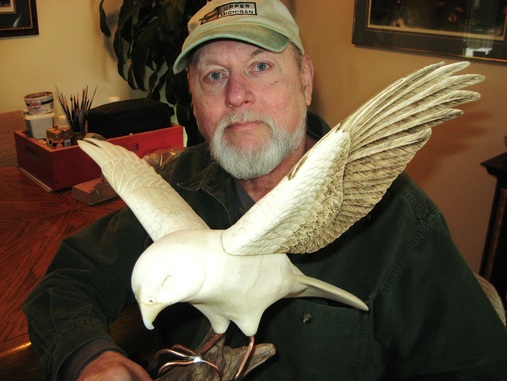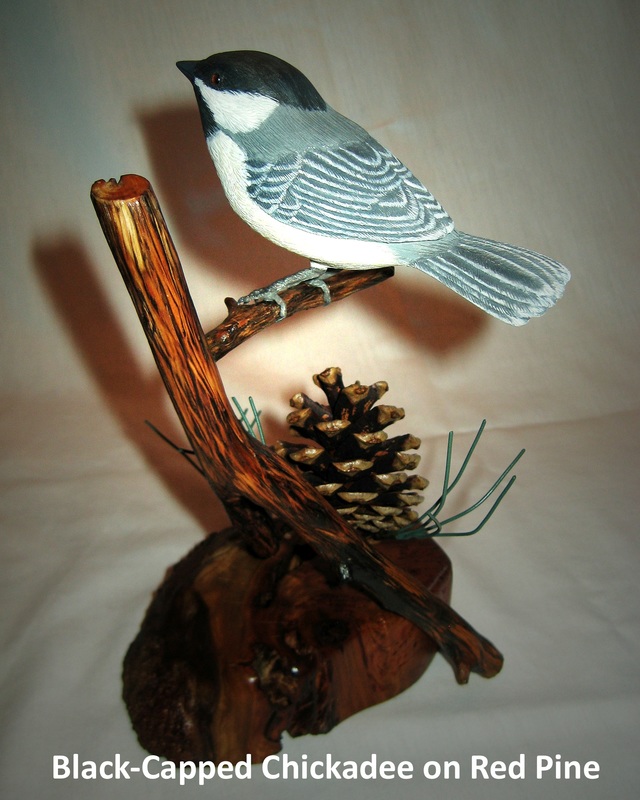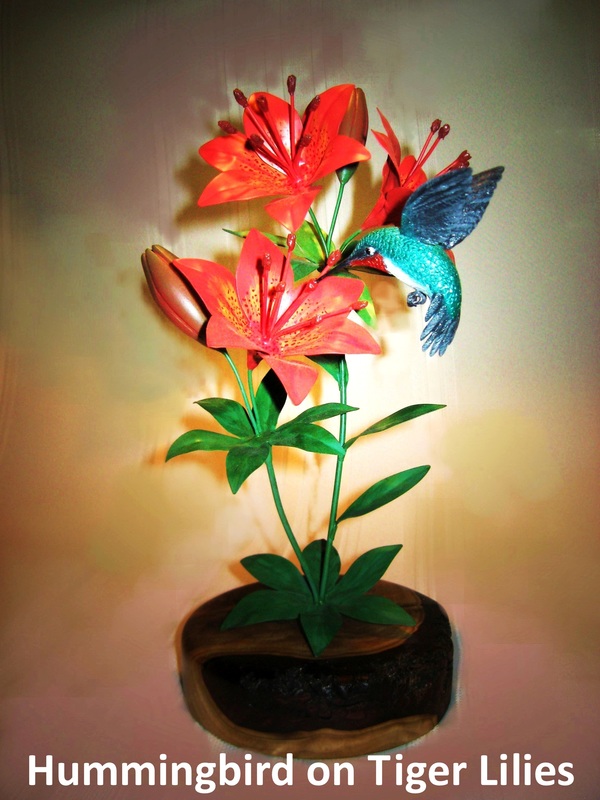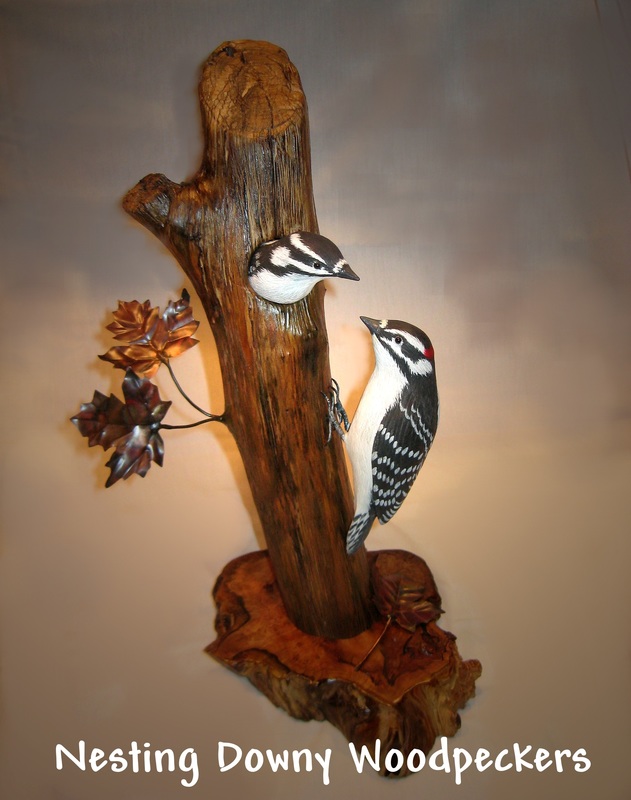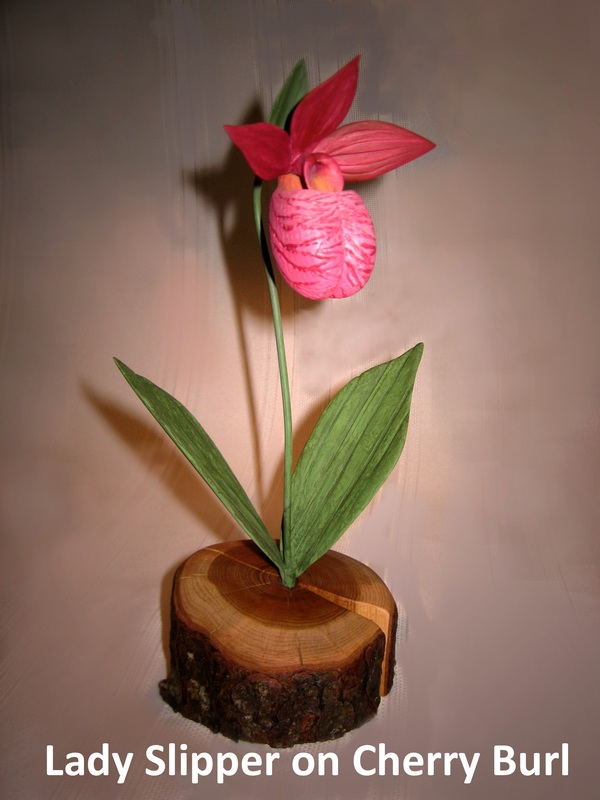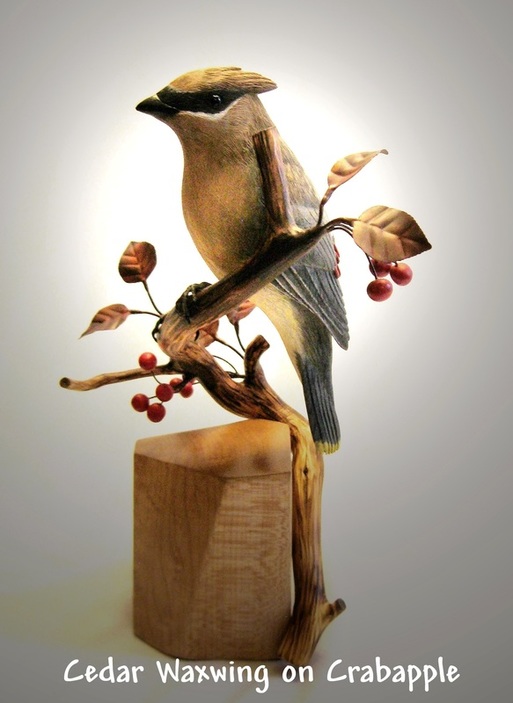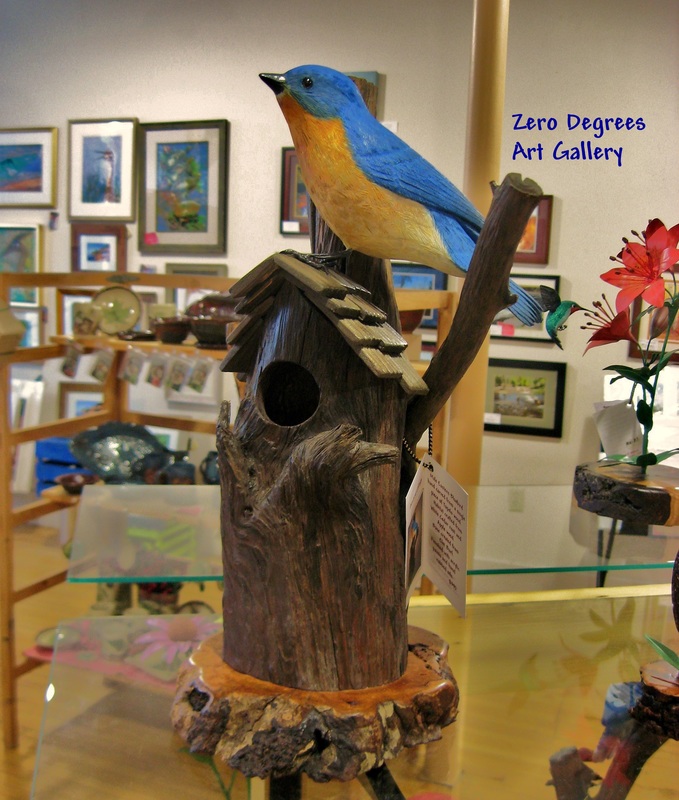MICHAEL WILLARD: WOOD TO BIRDS
|
As a U.P. native, I have always had a deep love for the natural splendors that it has to offer.
I live here because of my affection for fishing, hunting, foraging for mushrooms, and all of the other wonderful edibles that nature affords. I enjoy these activities, not only because of the delectable treats they provide, but also because of the satisfaction I find in the observation of and interaction with the creatures of the forest and the unspoiled environment in which they live. This appreciation of nature extends to my home in Marquette, where both my wife Kristine and I are actively involved in bird watching and improving habitat to provide food and shelter for the over 80 species of birds we have studied in our back yard. My interest in birds, teamed with my lifelong love of woodworking, has brought about a desire to re-create what I see in nature in the form of lifelike sculptures created from wood. I aspire to replicate, with the finest detail possible, local birds and the habitat they frequent. Habitat is crafted from a mixture of woods and metals. Each undertaking is carefully finished with acrylic paints and hand rubbed oils. The average project requires four to six weeks of work to complete. Larger carvings, such as raptors, may take up to three months. The detail in my carving requires thousands of fine cuts and burns. To achieve this level of detail, I prefer a wood known as Tupelo or Black Gum. Tupelo is favored by most artistic wildfowl carvers because of its lack of resin and its uniform interlocking grain. Tupelo comes from the swamps of the southern United States and can reach 125 feet in height and up to 6 feet in diameter. The submerged portion of the tree is lighter in weight and finer in texture. This part of the tree is best for carving. In Florida, beekeepers keep hives along the river swamps to produce the famed Tupelo honey. The wood used to create realistic habitat and bases for my carvings is sourced locally, the best of which is obtained from highly prized sections of hardwood burls and figured timbers. Additional aspects of habitat are crafted from driftwood and other unique natural wood components, as well as metals such as copper and brass. Most of my attention is devoted to carving birds. However, I also enjoy doing other darlings of nature such as native wildflowers, prized mushrooms and assorted small critters. This work is done with a variety of local woods, such as cedar, spruce and balsam. With all of my endeavors, I never fail to recognize that nature is the real artist. My goal is simply to emulate this beauty in an enduring form. In hope you enjoy my carvings as much as I do creating them. Thank you for your interest. |
Location |
|
